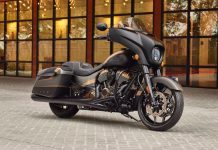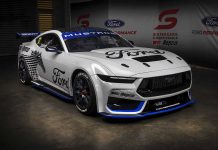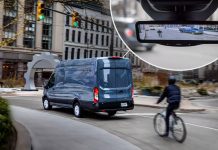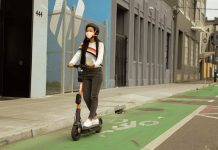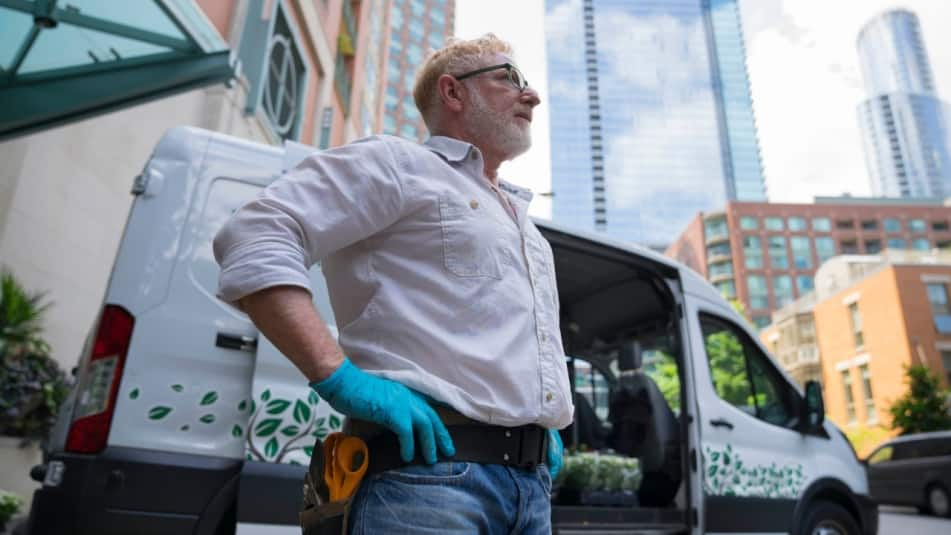Steve McBride, executive director of Pewabic Pottery, knew the future success of this historic business couldn’t rely on foot traffic alone. To find new ways to engage with the community and increase awareness of its business, owners of the 116-year-old ceramic studio and school purchased a Ford Transit and created a traveling exhibition space with portable ceramic firing kilns that allows the artists to bring the Pewabic experience to community festivals and schools.
“This is something we’d been thinking about doing for almost 30 years,” said McBride. “We knew we needed to customize the interior of the van to reflect our history while also creating a new kind of experience. We wanted it to be easy for people to walk through, so Ford’s option for a high roof and easy upfitting made choosing a Transit a no-brainer.”
Pewabic and its Street Team is just one example of a trend being embraced by small businesses and entrepreneurs – mobile operations. With consumers increasingly valuing scarce free time and commercial real estate pricing up six percent year-over-year, according to Real Capital Analytics, savvy merchants have discovered that people want the retail and service industries to come to them.
“This trend sits right at the intersection of craft and convenience,” said Sheryl Connelly, Ford chief futurist. “Clicking a button and getting something shipped to you is something we’re used to, but now we’re quickly moving into ‘Click a button, get a service or get a custom experience.’ We all saw this start with the food truck trend, but as we shift away from commodity purchasing and toward personalized retail experiences, we’re seeking a more meaningful connection with brands – one that turns commonplace transactions into memorable moments. So being able to build out a van to suit that experience is a new way to imagine a brand.”
Businesses are choosing full-size vans to grow their companies rather than investing in stationary brick and mortar locations. Understanding these new trends and how customers will use their vehicles is part of why Ford has been America’s best-selling commercial van brand for 40 years.* Year-over-year, sales of Transit are up 1.9 percent, and that jumps to 5.3 percent for fleets in the one-to-five-vehicle range.
“This is a segment we’ve been watching for some time,” said Tiffany Chang, Ford Transit marketing manager. “This segment is where customers hustle and where entrepreneurs are most creative.”
Mobile operations provide flexibility for business owners to set up shop near corporate offices, in bustling downtown locations and at festivals and events around school campuses. Several steps are removed from the overall purchase process, allowing consumers almost instant access to goods and services.
“A lot of our customers can’t bring a bicycle in or just appreciate the convenience of service and sales at home,” said Denise West, co-owner of Sarasota PopCycles. “Having a van lets us take care of our customers better. Plus, because of the big ad space it offers we reach new people when we’re on a run. A neighbor sees the van and calls us to schedule service of their own.”
According to an Out Of Home Advertising Association of America study performed in 2019, 64% of U.S. residents age 16 or older surveyed noticed a wrapped vehicle advertisement within the past month and 44% have noticed one in the past week.
West’s husband Jeff Dimitry is 6-foot-2, so when he’s on calls, Transit’s available 81.5 inches of interior height ensures he doesn’t have to slouch while fixing or setting up bikes. For 2020, the new Ford Transit is adding even more configuration options. Two wheelbases, three roof heights, three overall lengths, a new crew van seating arrangement, three engine choices, single- or dual-rear wheels and available all-wheel drive mean Transit can be configured in thousands of ways.
Howard Nemeroff has no storefront at all, running his floral business, Plant Parenting, as a direct-to-consumer operation. In addition to creating installations for customers, he saves plants from folks with brown thumbs. “People have their physician, pets have vets, we service sick plants,” he said. “I’ll get calls that lead to pruning or repotting or soil amendment.”
Nemeroff opted for an EcoBoost®-powered Transit to keep up with Chicago traffic and the van’s high roof lets him push rolling greenhouse racks in and out of the vehicle to save time when he’s working in a skyscraper.
Ryan Wells is 24. He’s been racing dirt bikes for 20 years. To support his racing habit, he started AZ Dirt Bike Training to help teach riders not only how to be fast but also how to be safe.
“People wanted to learn riding skills, and I figured it would be silly to bring them to me and for me to have a shop, so I bought a Transit and built it out to work for my racing career and my business,” said Wells. His Transit has living space up front and a garage in the back. He can travel anywhere in the country and either compete in motocross or hold training sessions.
Future owners like Wells who need space but have never operated a full-size van will find enormous benefits in the 2020 Transit with its portfolio of driver-assist technologies. Standard Pre-Collision Assist with Automatic Emergency Braking paired with available adaptive cruise control eases traffic stress, while available features like enhanced park assist simplify parallel and perpendicular parking. New for 2020 Transit, all-wheel-drive is available and can help give confidence to entrepreneurs that their mobile business can travel to new destinations near and far.
Fordpass Connect™ with 4G LTE Wi-Fi** with connectivity for up to 10 devices at a maximum distance of 50 feet away means owners can stay connected to the cloud while their customers can use their phones to stream the creative process or while away the time during a haircut or waiting for their bike to be fixed.
The upgraded 2020 Transit arrives at Ford dealerships at the end of this year.















